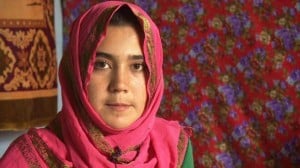In a short interview in The New Yorker this past September, American photographer Lynsey Addario, who has covered the Middle East and South Asia for over a decade, talks about her experience photographing Muslim women:
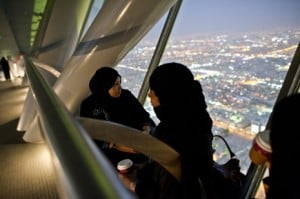
“The more I photographed Muslim women, the more I was able to metaphorically strip away the burqas and hijabs, and start chipping away at the profound misconceptions that existed in other parts of the world about these women and their culture.”
The language used here has become so ingrained as to be unquestioned, even for Muslim women themselves. It takes a conscious effort to step back – or to use more appropriate terminology, to zoom out – to see that it is neither as matter of fact as it appears, nor as benign as those who wield it believe. It takes a conscious effort of “imagining an inverse” to see the distortions of the lens applied consistently to projects involving images of Muslim women. Imagine, for example, opening up a major newspaper in a Muslim majority country and finding an interview with a photographer who shares her expertise about Christian women, gained from photographing Christian women, with the concluding sentence presenting “a selection of images of women in the Christian world.”
There’s a certain cognitive dissonance there, even if you follow the accepted category-shifting paradigm of Western/Muslim. Yet when it comes to Muslim women, this framework is backhandedly positive: a way for the photographer to “chip away” at misconceptions regarding women from a certain religion. And so Addario goes on to express what she has gleaned from her experience:
“Family is such a fundamental part of Islam, and women run the family. I had to force myself not to impose my own definition of political and social freedom on women in Islam, and approach each story objectively.”
It’s difficult to overlook the categorical statement about how family functions in Islam, and the cultural relativism the photographer feels she needs to engage in – as though Islam was a culture, as though families function the same way and women have the same role in rural Indonesia, downtown Marrakesh, and diasporic Dearborn. Establishing a basis for engaging with Muslim women elides the diversity across a broad spectrum from the nominally or culturally Muslim to the religious, overlooking how religion is effected by factors such as nationality, ethnicity, and class as well as equating, as The New Yorker does, the somewhat problematic subset of “Women in the Muslim World” and the wider “Muslim Women.”
Talking about her visit to Saudi Arabia, Addario explains:
“My only image of the women was in the all-encompassing abayas. I never could have anticipated the intelligent, educated, and fashionable women I met over the course of that year.”
The surprise about what happens when one “metaphorically strips away the burqas and hijabs” has a similarity to evolutionary arguments about cultural difference, and it is not difficult to see how this relates to the comment that Saudi Arabia “must embrace change at its own pace.” The impression is of a sense of backwardness which is linked to religion or cultural norms to be stripped away, rather than to political, social, and economic forces which affect society on various structural levels.
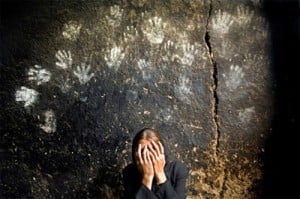
This is at the heart of the troubling assumptions encouraged by the ready-made category of Muslim women as subjects of photography, which can precipitate a slide into images which confirm what you think you know, raising questions of ethics as well as aesthetics. There is no need to invoke the colonialist postcards of Algeria. Canadian-Croatian photographer Lana Šlezić’s project Forsaken, a collection of photographs and vignettes that document her journey over the two-year period during which she lived and worked in Afghanistan, advances a familiar debilitating narrative implicit in the project’s title, the word forsaken, a word with religious connotations, a word commonly associated with the word “child,” which should make us question, “forsaken by whom?”
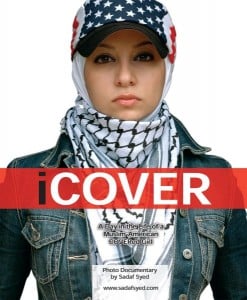
If there is something troubling about the idea of “a series of images of Muslim women,” it is not least the fact that it has become so natural that we don’t even think to second-guess the assumptions underlying it. A series of images of Christian women as an already constituted and well-defined group might raise an eyebrow, a series of images of Muslim women does not. However this is also the framework for projects such as Sadaf Syed’s “iCOVER: A Day in the Life of a Muslim American covered girl,” a coffee table book of 150 pages of photographs of Muslim women in hijab. They are first and foremost Muslim women, because Syed begins from a position where religion is the most signficicant identity, and then shows the diversity within that community, as her subjects include a professional boxer, a cross-country truck driver and mechanic, an American soldier, a surfer and tri-athlete, and a court judge. Yet it could be argued that this engages on the same playing ground as the accepted discourse, even as it attempts to provide the “real” image of Muslim women as diverse. Syed herself articulates her work as wanting to combat negative media images which “are not doing justice to the beauty of Islam…A religion made up by different cultures, different races, and different backgrounds.” She explains that she wanted to use the medium of photography, to “celebrate Muslim women in Islam,” because
“That’s what inspired me as a photographer: to be a photographer that touches people’s hearts in a humanized way.”
Both Addario and Syed’s comments signifiy an attempt to capture and humanize an already-constituted community defined under the label Muslim women. The question is, does beginning from this basis contribute to the sense of this group as monolithic, does it propogate the legitimacy of the idea of “a series of images of Muslim women,” and if so, are there supplementary or alternative approaches which could offer a different way of seeing?
Arab-American photographer Rania Matar’s project A Girl and Her Room, an exhibition of 46 photographs focusing on the idea of a girl “alone in her personal space” offers one such example, as it explores the similar issues girls from both the United States and the Middle East face as they enter adulthood. The subjects, ranging in age from 12 to 23, are“teenage girls and young women at a transitional time of their lives, alone in the privacy of their own personal space and surroundings: their bedroom, a womb within the outside world.”
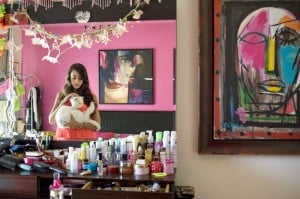
Differences and similarities leap out at us from within these rooms, differences even among those from the same region, between Alia from Beirut with her interest in graphic design, playing soccer, and modern dancing, and Bisan from Bethlehem or Shifa’a from Jerusalem, concerned about the political situation and the wall which “blocks our lives.” And there are the similarities, thoughts about the future, career ambitions, marriage, an interest in collecting stuffed toys shared by Krystal in Boston and Susan in Beirut. A Girl and Her Room is compelling in capturing the shared world of girls in their transition to womanhood, even as it captures the two worlds Rania Matar is most familiar with, “the two worlds I experienced myself as a teen and a young twenty year old: the United States and the Middle East.”
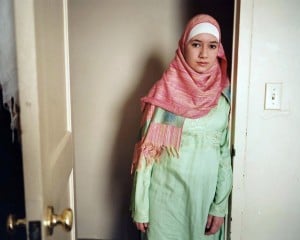
Similarly, photojournalist Amira Al Sharif’s project, advertised on her Kickstarter page Unveiling Misconceptions: A Muslim Woman Documents Lives of American Women, provides one example of an approach that goes in both directions, looking both inward and outward: “looking at the lives of American women in their 20s and connecting them to the lives of her and her sisters back in Yemen.”
in her Kickstarter video, Amira Al Sharif remarks on illiteracy levels in Yemen in relation to the importance of photography. Her words on understanding the world through images reminded me of the introduction to Ways of Seeing, where John Berger comments that
“Seeing comes before words. The child looks and recognizes before it can speak. But there is also another sense in which seeing comes before words. It is seeing which establishes our place in the surrounding world; we explain that world with words, but words can never undo the fact that we are surrounded by it.”
It’s important to recognize not only that the way we see is affected by what we believe we know, to try to deconstruct those preconceptions which can work as blinders, but also to construct the way we see ourselves in relation to the world, in a dialectic process – a process which might involve unpacking the assumptions in the sometimes too readily constituted category of Muslim women.






